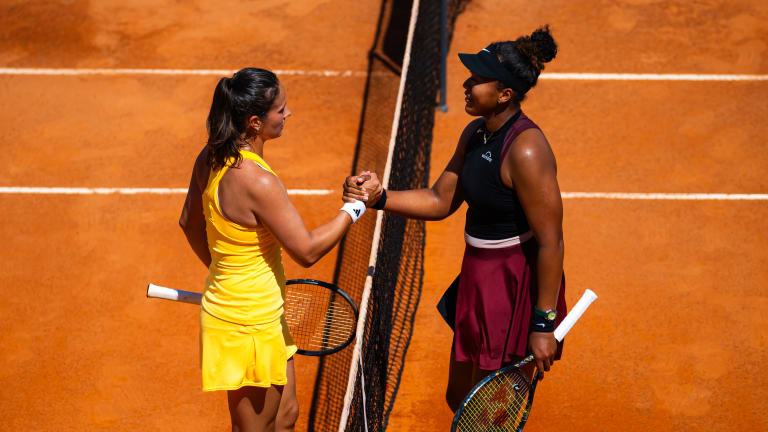Roland Garros
Naomi—or, “Clayomi”—Osaka: The Great Reset
By May 24, 2024Roland Garros
Was the Carlos Alcaraz-Jannik Sinner Roland Garros match the best ever played?
By Jun 13, 2025Roland Garros
Who were the winners and losers at 2025 Roland Garros?
By Jun 09, 2025Roland Garros
Carlos Alcaraz and Jannik Sinner played the match of the decade, and maybe the century, at Roland Garros
By Jun 09, 2025Roland Garros
PHOTOS: Carlos Alcaraz captivates Chatrier with trademark joy after improbable Roland Garros title defense
By Jun 09, 2025Roland Garros
Carlos Alcaraz saves three match points, tops Jannik Sinner in longest Roland Garros final of Open Era
By Jun 08, 2025Roland Garros
Aryna Sabalenka clarifies controversial Coco Gauff claim: "Can't pretend it was a great day"
By Jun 08, 2025Roland Garros
Coco Gauff counters Aryna Sabalenka's Roland Garros claim by saying she 'wanted' Iga Swiatek in final
By Jun 08, 2025Roland Garros
2025 Roland Garros men's final preview: Carlos Alcaraz vs. Jannik Sinner
By Jun 07, 2025Roland Garros
PHOTOS: Coco Gauff celebrates Roland Garros title with parents, toasts champagne at Tennis Channel set
By Jun 07, 2025Naomi—or, “Clayomi”—Osaka: The Great Reset
Roland Garros once broke Osaka. Now, the hard-court titan is learning to embrace its signature surface.
Published May 24, 2024
Advertising
![“I'm just really excited to learn more about [the] clay-court [game] and develop and go to play in Paris,” Osaka said in Rome.](https://images.tennis.com/image/private/t_16-9_768/f_auto/tenniscom-prd/fxvpyulmnmgqzj9cvfy3.jpg)
“I'm just really excited to learn more about [the] clay-court [game] and develop and go to play in Paris,” Osaka said in Rome.
© Getty Images
Advertising
Advertising

Kasatkina and Osaka met for clay-court practice; Daria afforded Naomi just two games. Then they met on the match court, and the tables were turned.
© 2024 Robert Prange
Advertising

Game, Set, Recharge
How Tsitsipas, Osaka and other pros embrace the weekly grind.